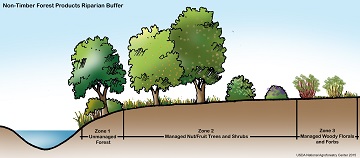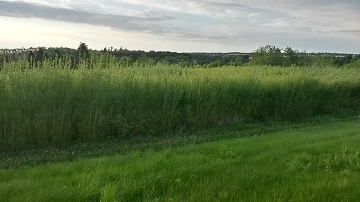Multifunctional Riparian Forest Buffers: Tools for Merging Conservation and Production

Riparian forest buffers offer numerous environmental benefits. They can help improve water quality by filtering non-point source pollution and stabilizing stream banks, enhance terrestrial and aquatic wildlife habitat, and even sequester carbon. Although many landowners see the environmental benefits of riparian buffers, they are often wary of losing this profitable, arable land that they rely on for crop and/or livestock production. As a result, landowners are left with a difficult decision between conservation and production. Even if financial incentives are provided, such as cost share payments, landowners may remove their riparian forest buffer once their contract term is over and payments cease.
- Details
- Written by Gary Bentrup, National Agroforestry Center and Katie Commender, Virginia Tech




